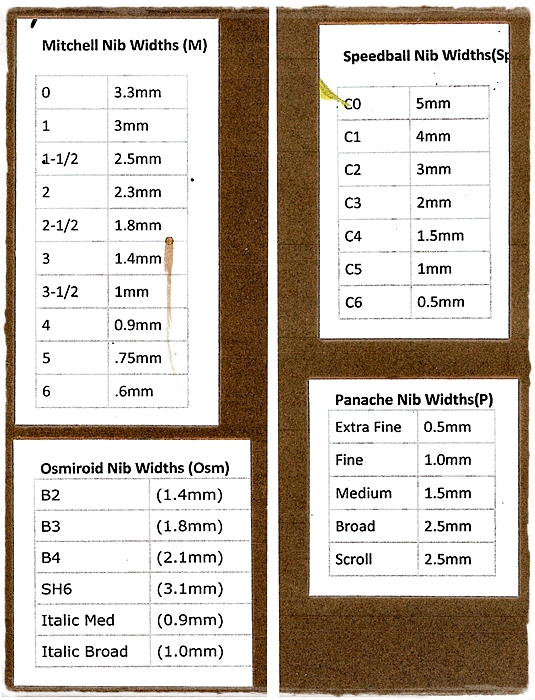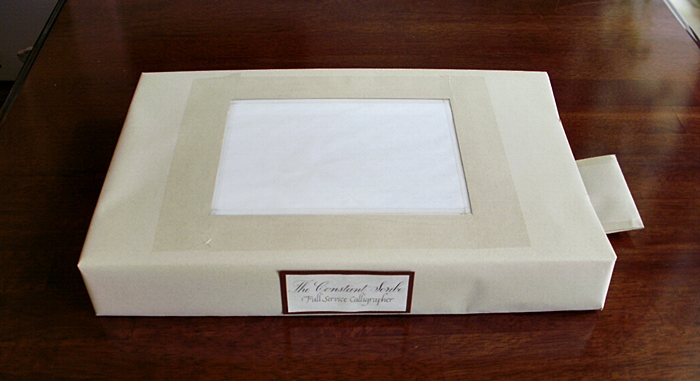
Necessity, they say, is the mother of invention.
Many, many years ago I made this light box out of an old shirt box out of necessity. I had promised to scribe some bookmarks at a church Family Fun Fair but my lighted drawing board was too big and bulky to take along. My little box wasn't very attractive (I think it said Kohl's across the top) but it worked great. I've used it off and on and it's proven to be pretty sturdy.
Last spring, I wanted to use it at a Bridal Fair, but it looked pretty beat up, so I covered it with paper and slapped a logo on the front.
In hind sight, I wish I had taken photos of it before I covered it but hopefully, with the photos, you'll be able to see how I did it and maybe make one for yourself!
To get started you'll need a standard shirt box, an 8 x 10" piece of glass, duct tape, scissors, exacto knife, a ruler, and an 18" under-the-counter fluorescent light fixture.
Working with the top box lid facing down, draw diagonal lines from corner to corner on the inside of the box lid to find the center. Using those lines as a guide, lay the glass down on the inside of the box top, center it, and trace around it. Set the glass aside. Now, using the ruler, make a rectangle inside the one you just traced, measuring 1/2 inch in on all sides. Laying the shirt box top on a surface safe to cut on, cut out the inner rectangle using a ruler and exacto knife (or you could use a rolling cutter). You'll need to cut a piece of translucent paper the same size as your glass and tape it securely to the glass. Now, lay the glass back down where you centered it, (glass side down, paper side up) and secure with duct tape. Flip the lid over and using clear tape, tape around the opening, securing the lid to the glass from the outside.
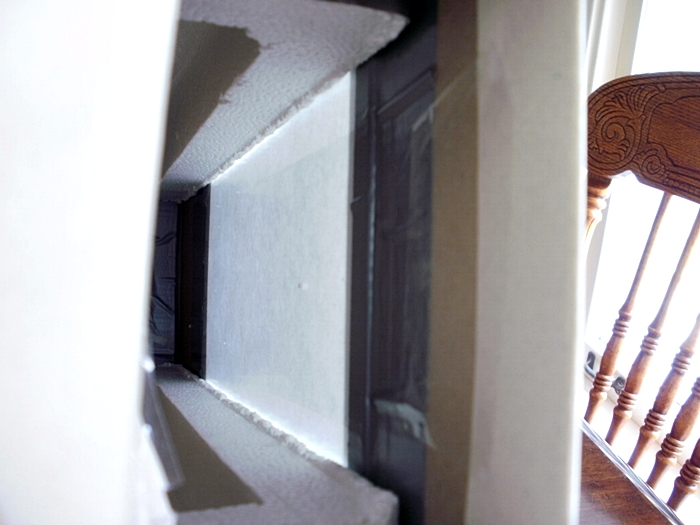
Peeking inside mine, you can see the glass taped to the lid with duct tape.
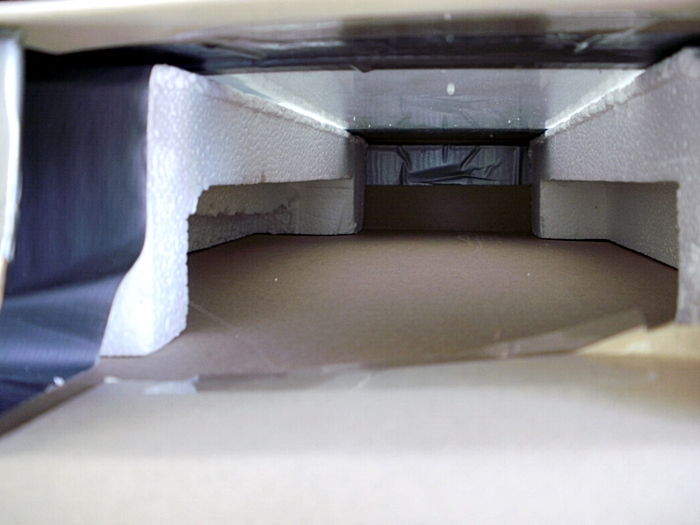
Next, trim some sturdy pieces of styrofoam to run the length of the inside of the box. If you're lucky, like me, you'll find some that will work without too much trimming. You'll want them big enough to support the sides of the glass. Tape them into place securely with duct tape.
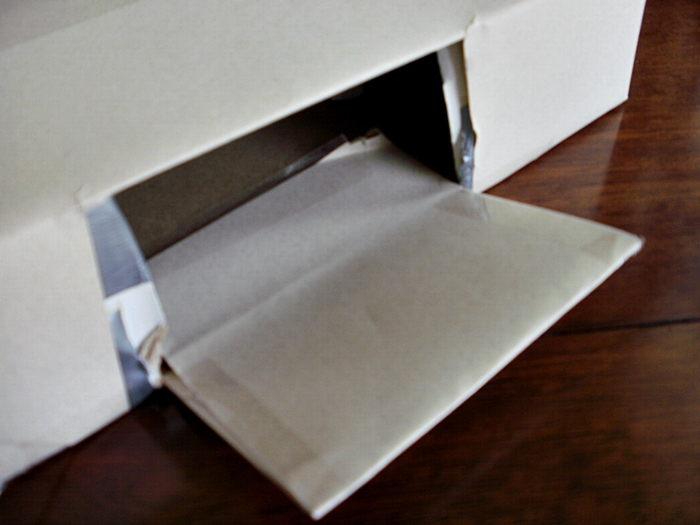
Now, put the lid on top of the bottom and cut a hole in the side all the way through the lid and the side of the box, big enough to slip in your light fixture. I left a flap but I don't know why. You don't really need one! Tape the lid of the box and bottom together.
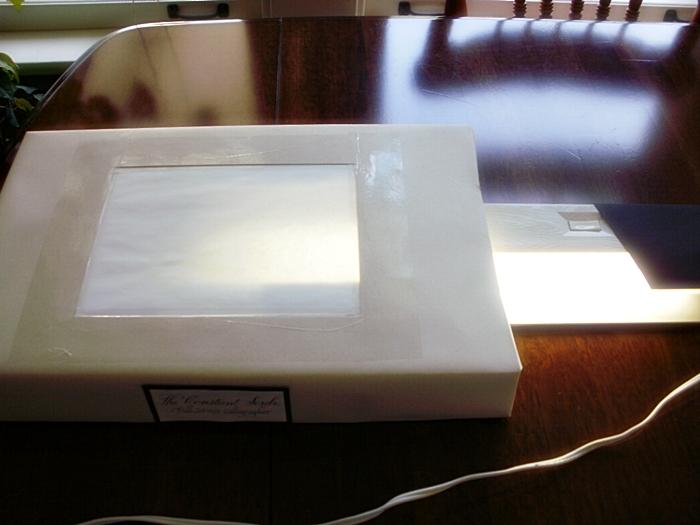
Put your light fixture in the side, plug it in, and you're ready to go!
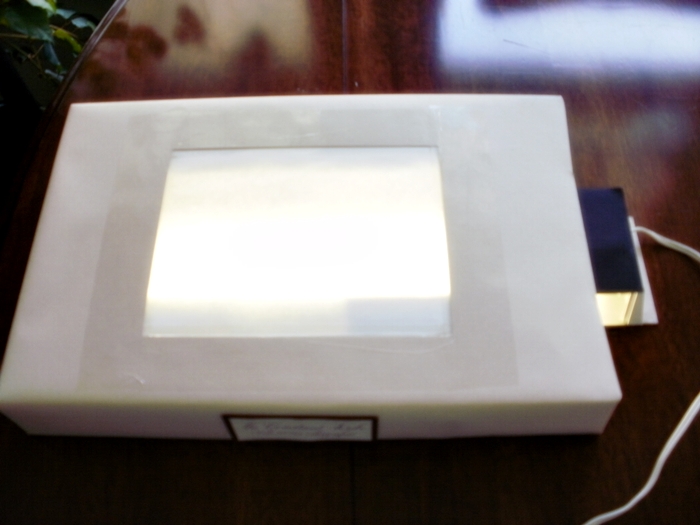
Clear as mud, right? If you decide to make one and you have problems or questions, just let me know and I'll try to help! If you do make one, send me a picture and I'll add it to this post!
 Tuesday, January 31, 2012 at 6:52PM
Tuesday, January 31, 2012 at 6:52PM  Kim |
Kim |  2 Comments |
2 Comments | 
 The Constant Scribe
The Constant Scribe


